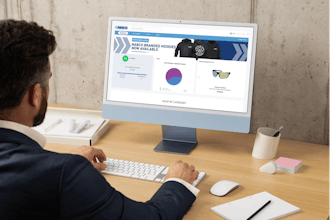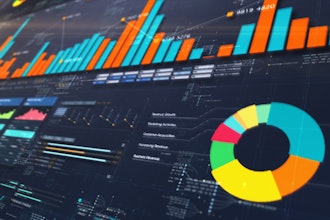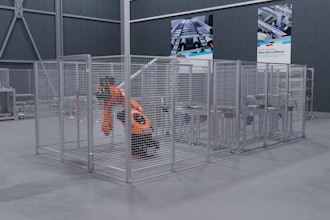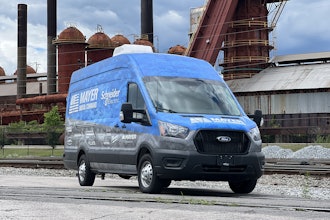
In today’s fast-past distribution environment, stock-outs and disconnected procurement processes cripple operations, reduce profit margins and erode vendor relationships and customer loyalty. So, for industrial distributors, optimizing the procure-to-pay cycle isn’t just a back-office function. It’s a strategic imperative that can determine whether a business thrives or struggles to survive.
What Is Procure-to-Pay?
The procure-to-pay process encompasses the complete workflow from identifying purchasing needs to settling vendor payments. Efficient procure-to-pay cycles rely on connectivity, collaboration and automation, but, despite technological advances, most accounts payable invoices are still received on paper, manually approved, and paid via paper checks. This can quickly lead to errors, missing paperwork, lost checks, damaged vendor relationships, strained cash flow and unhappy customers.
However, industrial distributors can avoid these issues with modern distribution management software that applies built-in business intelligence, machine learning and configurable workflows that automate and streamline the procure-to-pay process. It is the most strategic way to prevent stock-outs with proactive inventory planning, fortify vendor relationships with transparent collaboration, and gain business agility with cloud-based data.
Procure-to-Pay Phases Streamlined with Technology
While procure-to-pay involves many major components—including requests and requisitions, vendor bidding, inventory replenishment, time-phased demand planning, purchase orders, inventory and warehouse management, accounts payable, general ledger, business intelligence and reporting — the entire process can be broken down into four phases.
Preparation
The procure-to-pay process actually begins well before a purchase order is created. It starts with identifying a need. For industrial distributors, this means identifying the products or services necessary to support operations or meet customer demand.
That need is then translated into action. If the request is for a large transaction or an item that is not regularly stocked, it may require managerial or departmental approval. If so, it is forwarded to the appropriate approver, who will accept or reject it. If the request is rejected, it can be revised to meet the approval criteria.
Once a requisition is approved, the purchasing manager or other designated procurement party takes over. They may convert the requisition into a formal purchase order, request vendor quotes, or launch a vendor bidding process.
There are multiple touchpoints in the preparation phase, and technology designed for industrial distributors can make all of them run more smoothly and efficiently.
For instance, visibility is a common challenge when identifying a need. It’s hard to know what you need if you can’t see what you already have. That’s why modern distribution-focused business management systems include powerful tools for managing both stock and non-stock inventory. These systems enable decision-makers to assess current inventory levels and identify gaps instantly. If a needed item has been purchased before and already exists in the system, it can be directly selected and reordered. If an item is new, it can be created in the system or requisitioned from a current or potential supplier.
Look for a platform that supports detailed item attributes, such as size, color and style; lot or serial tracking; and flexible item creation from imports, vendor files, requisitions, or estimates. It should also support non-inventoried items, like services, supplies and expenses — everything from support contracts to maintenance materials.
Equally important is how well the system connects departments and software across the organization, how comprehensive its supplier management capabilities are, and how well it can serve as a central record for all procurement-related activities. A fully integrated business management solution provides real-time data, enabling faster, more accurate decision-making. It streamlines onboarding new vendors, maintaining vendor catalogs, and handling contracts, taxes and complex billing scenarios. And it is able to log calls, send emails, manage 1099 details and support regulatory compliance.
If your business management system can’t do all of this, it may not be equipped to meet the demands of today’s industrial distribution environment.
Procurement
After all the preparation is complete, it’s time for the actual procuring. The industrial distributor will select the vendor to work with, based on factors like price, quality, or other determining criteria. A purchase order is created, and the vendor provides the requested goods or services. If physical items have been purchased, they are stored in stock or shipped directly from the vendor to the customer.
A business management system with built-in requisition management features enables purchasing managers to generate requisitions directly within the system and manage vendor responses through a one-click conversion process. This automatically generates a purchase order from a winning vendor quote. You should also be able to generate purchase orders from approved requisitions and create them from scratch if necessary.
When inventory is received, the system should automate the purchase receipt data entry process, including information about the vendor, types of items received, units of measure, warehouse and location details, quantities received and dates. Lot and serial numbers should be automatically captured upon receipt, and warehouse management features should be optimized for use on mobile devices, making it easy for on-the-move warehouse employees to keep track of where items are located and when they were last updated.
Payment
Paying the vendor is, of course, one of the most essential parts of procure-to-pay, but it is fraught with manual processes. Again, despite advances in technology, most companies still process payments manually from paper invoices received in the mail or electronic bills sent by email. Accounting professionals spend countless hours entering data, matching invoices to purchase orders, and processing payments. Manual processes are prone to data entry errors, which can delay payments and result in late penalties that strain vendor relationships.
Modern business management applications incorporate artificial intelligence and machine learning, enabling industrial distributors to automate payment processing and maintain strong vendor relationships. Some critical invoicing, bill creation, reconciliation and payment processing features to look for are:
- Automatic identification of vendor, terms, currency, line items, amounts and other details from scanned or electronic vendor bills. This information should also be automatically mapped to accounts payable records.
- Automatic conversion of invoices into accounts payable bills.
- Support for check, ACH and credit payments, as well as bill reversal, prepayments, landed costs and tax calculations.
- Configurable workflows for reviewing and approving accounts payable bills.
- Automated bank feeds and artificial intelligence for expense matching.
- Tools to validate vendor information to make sure each payment is processed correctly and sent to the correct location.
Process Improvement
With every turn of the procure-to-pay cycle, there are always ways to improve it. The key to continuous improvement is having access to real-time, accurate information through financial and operational reports, role-based dashboards, system-generated alerts, and dimensional business intelligence that provides actionable insights. Choose software that will help you:
- Identify overdue payments before they become a problem.
- Create dashboards to monitor expenses and vendor performance.
- Automate text or email notifications for large bills, discount deadlines, overdue payments and other insights.
- Monitor key performance indicators and extract actionable information.
- Take advantage of early payment discounts.
- Manage, store and retrieve vendor documents.
The system should be able to accommodate any customization your industrial distribution business requires. Because the right system doesn’t just support procurement in general. It empowers you to better manage your specific procure-to-pay cycle, turning a complex process into a strategic advantage.
James Mallory is a senior product marketing manager at Acumatica. To learn more about streamlined procure-to-pay, read Acumatica’s free eBook, Automate Procure-to-Pay with Acumatica.






















